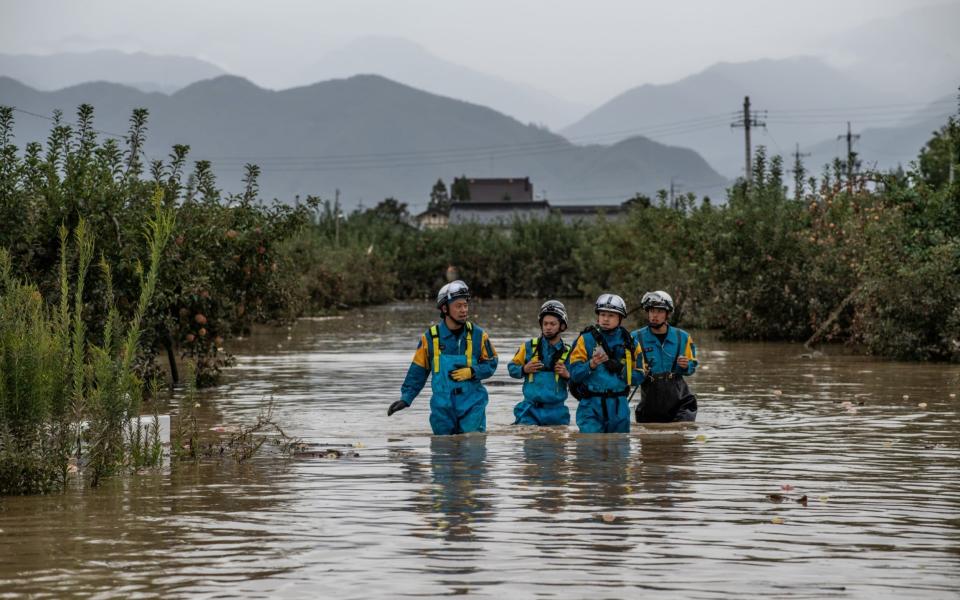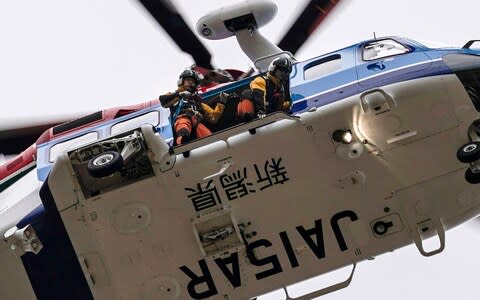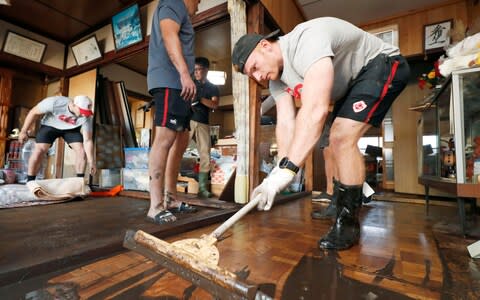Japan typhoon death toll rises to 43 as over 110,000 emergency workers scramble to rescue stranded people

The death toll from a powerful typhoon that swept Japan rose to 43 on Monday, as a major rescue and clean-up operation continued across the country.
The arrival of Super Typhoon Hagibis on Saturday brought swathes of Japan to a standstill, including the capital Tokyo, with record-breaking rainfall and violent winds triggering widespread flooding and landslides.
It is the most powerful to hit Japan in more than 60 years.
In addition to 43 confirmed dead, the storm also led to more than 200 injuries, while 16 people are still missing and more rain has been forecast.
Around 110,000 rescue workers – including police, firefighters, coastguard and Self-Defence Forces – were searching swollen rivers and flooded homes on Monday, with the help of boats, helicopters and snorkels.

Shinzo Abe, the prime minister, told an emergency meeting of ministers: “There still are many residents who have yet to be accounted for. Our people in uniform are working day and night in search and rescue operations.
“Damage has been made in an extremely wide range of areas, and more than 30,000 people are still being forced to remain in the state of evacuation. It is our urgent task to offer meticulous support to those who have been affected.”
Typhoon Hagibis – whose name means “speed” in the Philippine language Tagalog – unleashed up to 40 per cent of Japan’s annual rainfall only one or two days in many areas, according to pubic broadcaster NHK.
More than six million people were advised to evacuate at the peak of the storm, which also caused power cuts to hundreds of thousands of homes.

At least 20 rivers broke their banks across central and northeastern Japan due to intensely heavy rainfall, resulting in flooding in over 1,000 homes, according to media reports.
The Rugby World Cup was among several high-profile events whose schedule was impacted by the arrival of the storm, with a number of games cancelled as a result.
Canada’s rugby players opted to stay and help with recovery efforts in Kamaishi, a town in northeast Japan, where their match was among those cancelled due to the typhoon.

Around 15 players and officials filled sandbags with mud gathered from driveways and cleaned out a house that had been flooded in Kamaishi, a town which was badly hit by the 2011 earthquake and tsunami disaster.
“I think they would’ve done the same thing if they were in Canada, so it’s something we probably felt that we can help and we’ve got a day off and no game,” Tyler Ardron, team captain, told Kyodo News.
“We were just disappointed that we couldn’t play. We’ve really targeted this game and wanted a good game out of it, but unfortunately we couldn’t. But we’ve made the most of it. We’ve come out in the community.”

 Yahoo News
Yahoo News 